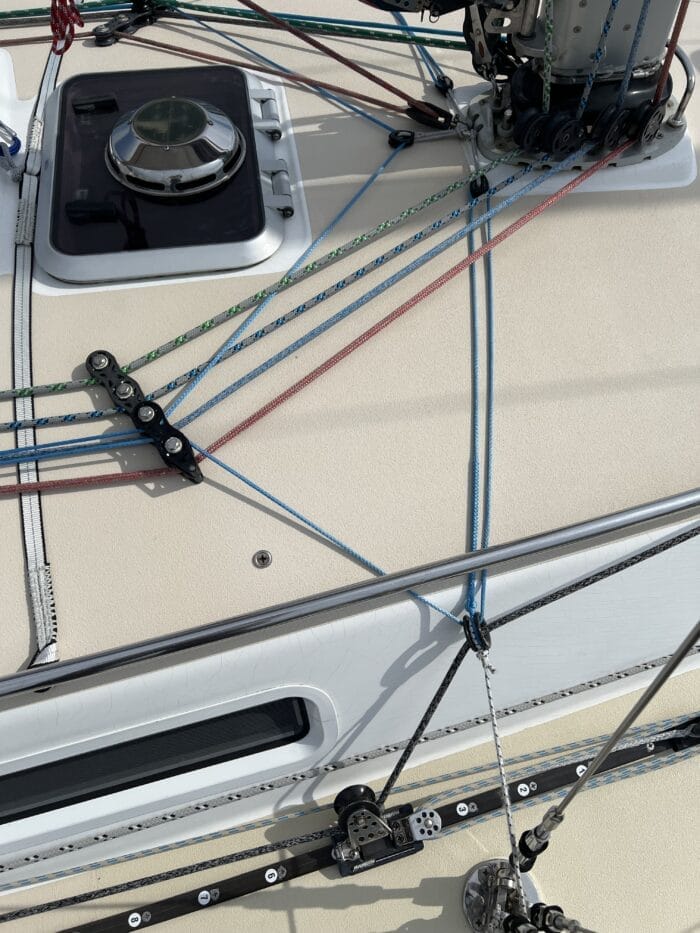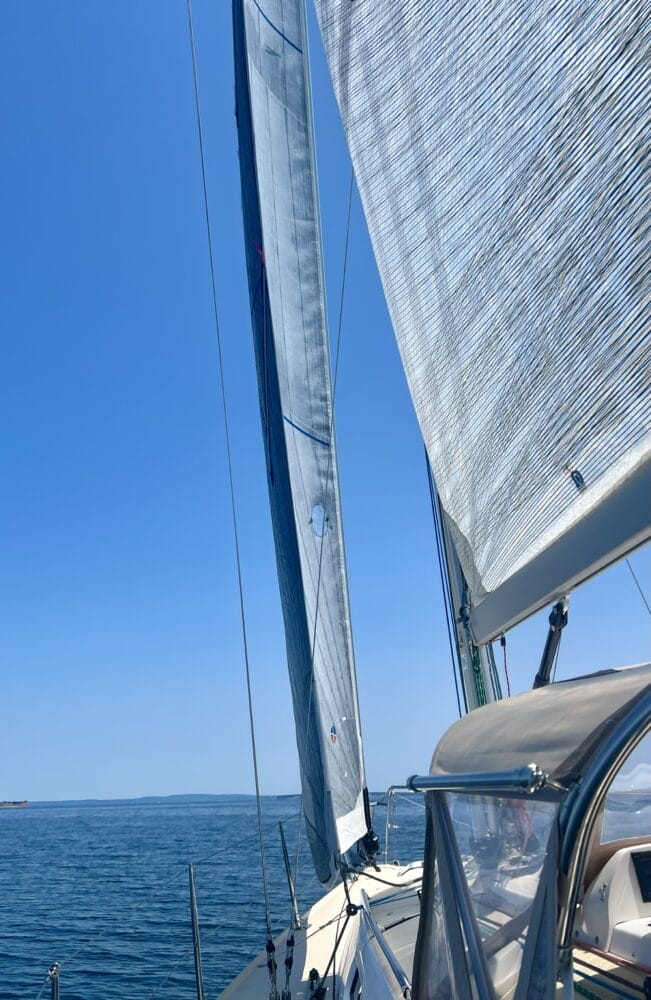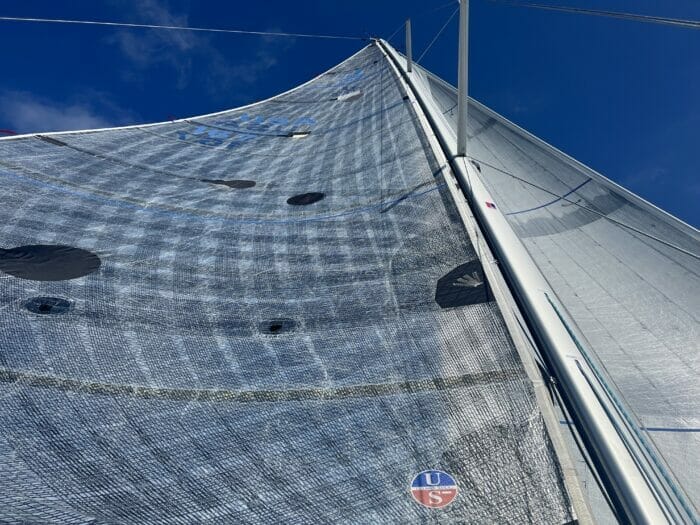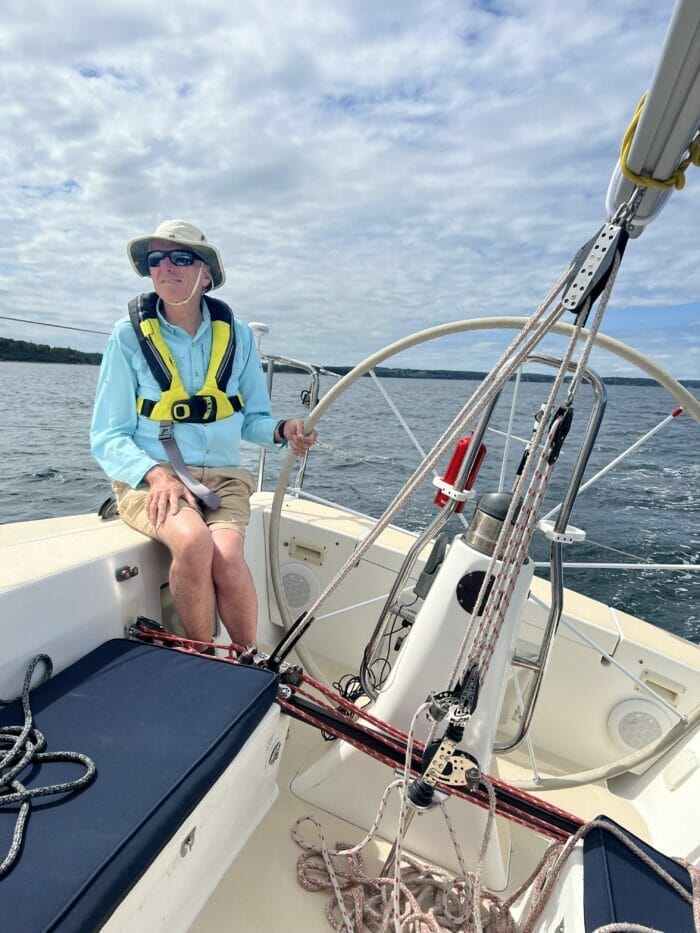
Tips, Tricks & Thoughts:
sail trim
-
eWincher 2 or SE?
2 CommentsReading Time: 2 minutesMembers
-
Fitting Jib In-Haulers
11 CommentsReading Time: 3 minutesMembers
-
A Fractional Rig is Like a Gearbox
1 CommentReading Time: < 1 minuteFree
Above is with the backstay set for light air (about 7 knots true) and mast on our J/109 pretty much straight. Big time power in the mainsail and lots of sag in the headstay powering up the jib.

This is the same two sails in 14 knots true at which point we de-powered by pumping the backstay down 3.5″.
Main is now quite flat with a nice open leach and plenty of twist and headstay much tighter, doing the same to the jib.
In a mast head boat with a rig this big, and without gorillas on the rail, we would have had to reef, but then would have been a bit under powered.
Loving sailing a fraction boat again after all these years.
-
Why We Need a Traveler
9 CommentsReading Time: < 1 minuteFree
We increasingly see boats without travellers, but that’s a big performance hit, particularly in light air going to windward where we want the boom on the centreline but the sheet not too tight. To make that happen the traveler car needs to be well to windward of centre.
Check out the nice twist and leach shape that results from this setup.








